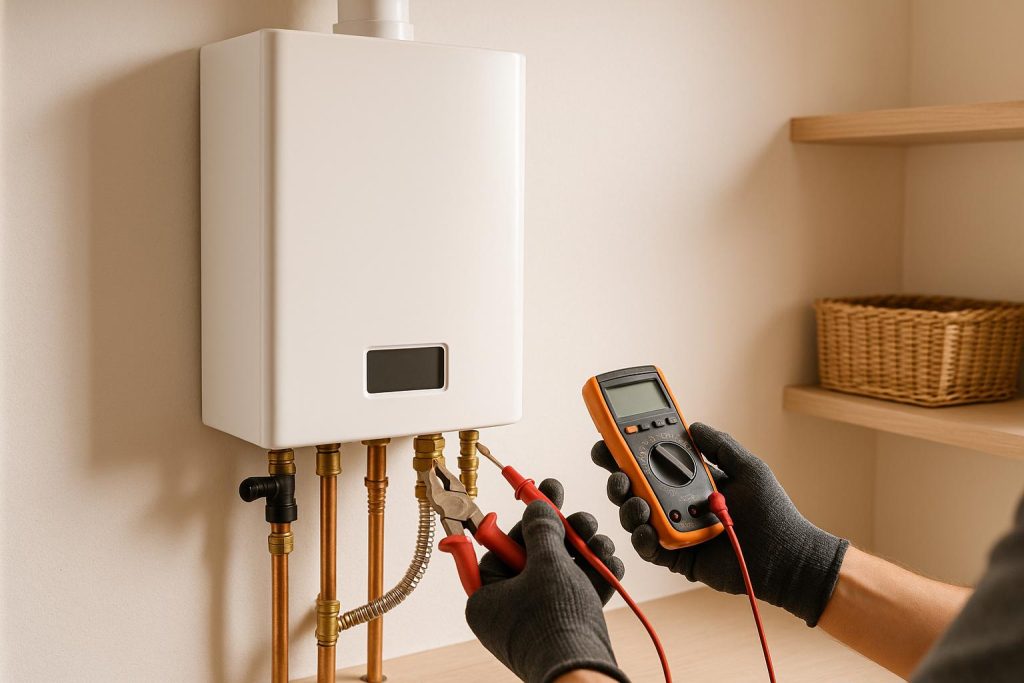Is your bedroom a serene oasis, or does it feel more like a cluttered storage room? For many, the bedroom can easily become a catch-all for clothes, books, electronics, and random items, leading to a chaotic space that can affect your peace of mind and quality of sleep. Imagine waking up each morning in a calm, organized environment, free of the stress that comes from clutter and disorder. Creating a clutter-free bedroom isn’t just about aesthetics; it’s about fostering a space that promotes relaxation, rejuvenation, and well-being.

The journey to a clutter-free bedroom can seem daunting, but with a clear plan and actionable steps, it’s entirely achievable. This guide will walk you through ten essential steps to transform your bedroom into a clutter-free haven. Whether you’re dealing with a small bedroom or a more spacious master suite, these strategies will help you reclaim your space and create a more organized, functional, and inviting room.
Setting Goals for a Clutter-Free Bedroom
Before diving into the decluttering process, it’s important to set clear, achievable goals. Defining what a clutter-free bedroom means to you will help guide your efforts and keep you motivated.
- Define Your Vision: What does a clutter-free bedroom look like to you? Is it minimalist with only the essentials, or does it include a few well-chosen decorative items? Take some time to envision your ideal space.
- Set Realistic Goals: Break down your vision into manageable tasks. Instead of aiming to declutter your entire bedroom in one day, focus on specific areas like the closet, nightstands, or under the bed.
- Create a Timeline: Establish a timeline for your decluttering project. Decide on a start date, set deadlines for each task, and allocate specific times for decluttering sessions. This will help you stay on track and avoid feeling overwhelmed.
Step 1: Declutter and Purge

The first step in creating a clutter-free bedroom is to declutter and purge unnecessary items. This can be a challenging but incredibly rewarding process.
Assessing Your Space
Start by taking an inventory of your bedroom. Walk around and note areas that accumulate the most clutter. Identify problem areas, such as overstuffed closets, piles of clothes, or cluttered surfaces.
Sorting and Categorizing
Next, sort through your belongings and categorize them into five groups: keep, donate, sell, recycle, and trash. Be honest with yourself about what you truly need and use.
- Keep: Items you use regularly or that have significant sentimental value.
- Donate: Items in good condition that you no longer need or use.
- Sell: Valuable items you no longer need but can sell.
- Recycle: Items that can be recycled, such as paper, electronics, or certain plastics.
- Trash: Items that are broken, damaged, or unusable.
Purging Unnecessary Items
To effectively purge unnecessary items, consider the following strategies:
- The One-Year Rule: If you haven’t used an item in the past year, it’s likely you don’t need it. This rule can help you make quicker decisions.
- Emotional Attachment: It can be hard to let go of items with sentimental value. Keep a few meaningful items, but don’t let emotions justify keeping everything.
- Encouragement and Motivation: Remind yourself of the benefits of a clutter-free space. Imagine the calm and relaxation of a tidy bedroom.
Step 2: Maximize Storage Solutions

Once you’ve decluttered, the next step is to maximize your storage solutions to ensure everything has its place.
Utilizing Under-Bed Storage
The space under your bed is prime real estate for storage. Use it wisely with these tips:
- Storage Bins: Invest in clear, plastic storage bins to keep items organized and visible.
- Drawers and Rollers: Consider using drawers on rollers that can easily slide in and out from under the bed.
- Vacuum-Sealed Bags: Store off-season clothing or bulky items in vacuum-sealed bags to save space.
Optimizing Closet Space
Your closet can be a game-changer in maintaining a clutter-free bedroom.
- Organization Systems: Install shelves, hanging organizers, and shoe racks to maximize vertical space.
- Seasonal Rotation: Rotate your clothing seasonally. Store off-season items in labeled bins or bags to keep your closet manageable.
Using Multi-Functional Furniture
Multi-functional furniture can significantly reduce clutter by providing additional storage options.
- Storage Benches: Use a storage bench at the foot of your bed for extra linens, blankets, or clothes.
- Ottomans: Opt for ottomans with hidden storage for books, magazines, or other small items.
- Bedside Tables: Choose bedside tables with drawers or shelves for extra storage.
Step 3: Organize by Zones

Organizing your bedroom by zones can make it easier to maintain a clutter-free environment.
Creating Functional Zones
Divide your bedroom into specific zones based on their function. Common zones include:
- Sleeping Zone: Keep this area minimal and serene, with only essential items like your bed, pillows, and a nightstand.
- Dressing Zone: Organize your closet and dresser in this area. Use hooks or a valet stand for items you wear frequently.
- Relaxing Zone: If space allows, create a small reading nook or seating area with a comfortable chair and a small table.
Maintaining Zone Boundaries
To keep items within their designated zones:
- Label and Store: Clearly label storage bins and boxes to ensure items go back to their proper place.
- Daily Tidying: Spend a few minutes each day tidying up each zone to prevent clutter from accumulating.
- Regular Maintenance: Schedule regular maintenance sessions to reassess and reorganize your zones as needed.
Step 4: Implement Daily Habits
Developing daily habits is key to maintaining a clutter-free bedroom.
Making the Bed Every Day
Making your bed each morning sets a positive tone for the day and instantly makes your room look tidier. Plus, it’s a quick and easy habit to establish.
Nightly Clean-Up Routine
Spend a few minutes each night putting away clothes, straightening surfaces, and tidying up your space. This nightly routine helps prevent clutter from piling up.
Step 5: Minimize Surface Clutter

Clear and maintain clutter-free surfaces to keep your bedroom looking organized.
Clearing and Maintaining Clear Surfaces
- Designate Homes: Assign specific places for frequently used items, such as keys, jewelry, or books.
- Regular Cleaning: Wipe down surfaces regularly to keep them clean and free of dust and clutter.
Decorating with Intentionality
- Choose Functional Decor: Opt for decor that serves a purpose, such as a stylish storage box or a decorative tray.
- Avoid Over-Decorating: Keep decor minimal and intentional to avoid visual clutter.
Step 6: Digital Decluttering
Managing electronic devices and reducing digital clutter can also contribute to a clutter-free bedroom.
Managing Electronic Devices
- Limit Devices: Reduce the number of electronic devices in your bedroom to create a more relaxing environment.
- Organize Cables: Use cable organizers to keep cords and cables tidy and out of sight.
Digital Detox and Minimalism
- Tech-Free Zone: Consider creating a tech-free zone in your bedroom to promote better sleep and relaxation.
- Digital Minimalism: Adopt a digital minimalist approach by reducing screen time and removing unnecessary apps or files from your devices.
Step 7: Regularly Reassess and Refresh

Maintaining a clutter-free bedroom requires ongoing effort and regular reassessment.
Scheduled Decluttering Sessions
- Regular Intervals: Schedule regular decluttering sessions, such as monthly or quarterly, to keep your space organized.
- Family Involvement: If you share your bedroom, involve your partner or family members in the decluttering process.
Seasonal Refreshes
- Deep Cleaning: Perform a deep cleaning and decluttering session with each change of season.
- Rotate Decor: Refresh your decor and textiles seasonally to keep your bedroom feeling fresh and inviting.
Step 8: Personalizing and Styling
Adding personal touches to your clutter-free bedroom can make it feel more inviting and comfortable.
Creating a Sanctuary
- Personal Touches: Add a few meaningful items, such as photos or artwork, to personalize your space.
- Cohesive Color Scheme: Choose a cohesive color scheme to create a harmonious and relaxing environment.
Incorporating Minimalist Design Principles
- Quality Over Quantity: Focus on high-quality, essential items rather than accumulating excess decor.
- Airy and Open: Keep your space open and airy by minimizing unnecessary furniture and decor.
Step 9: Dealing with Sentimental Items

Balancing sentimental value with practicality can be challenging but necessary for a clutter-free bedroom.
Balancing Sentiment and Practicality
- Selective Keeping: Choose a few sentimental items to keep and display, and store the rest out of sight.
- Creative Storage: Use creative storage solutions, such as shadow boxes or memory chests, for sentimental items.
Memory Boxes and Digital Archives
- Memory Boxes: Store tangible sentimental items in labeled memory boxes to keep them organized and protected.
- Digital Archives: Digitize photos, documents, and other sentimental items to save space and preserve memories.
Step 10: Seeking Professional Help (if needed)
If you find the decluttering process overwhelming, consider seeking professional help.
When to Consider Professional Organizers
- Signs You Need Help: If you’re feeling stuck, overwhelmed, or unable to make progress on your own, it might be time to seek professional assistance.
- Benefits of Hiring an Expert: Professional organizers can provide expert advice, hands-on help, and personalized solutions tailored to your needs.
Finding the Right Professional
- Choosing an Organizer: Look for a professional organizer with good reviews, experience, and a style that matches your preferences.
- What to Expect: Understand what services the organizer provides and what to expect from the process, including costs and timeframes.
Conclusion
Achieving and maintaining a clutter-free bedroom is a journey that requires dedication and regular effort. By following these ten steps, you can transform your bedroom into a peaceful, organized retreat. Remember to set realistic goals, develop daily habits, and regularly reassess your space to keep it clutter-free. With patience and persistence, you’ll create a serene sanctuary that promotes relaxation and well-being. Now, it’s time to take the first step and start your decluttering journey. Share your progress and experiences, and inspire others to create their own clutter-free spaces.





